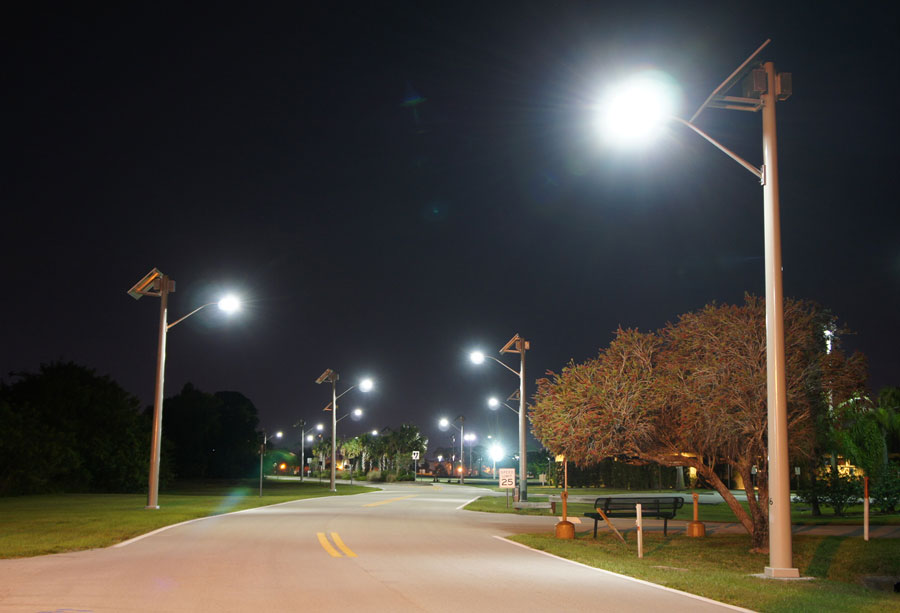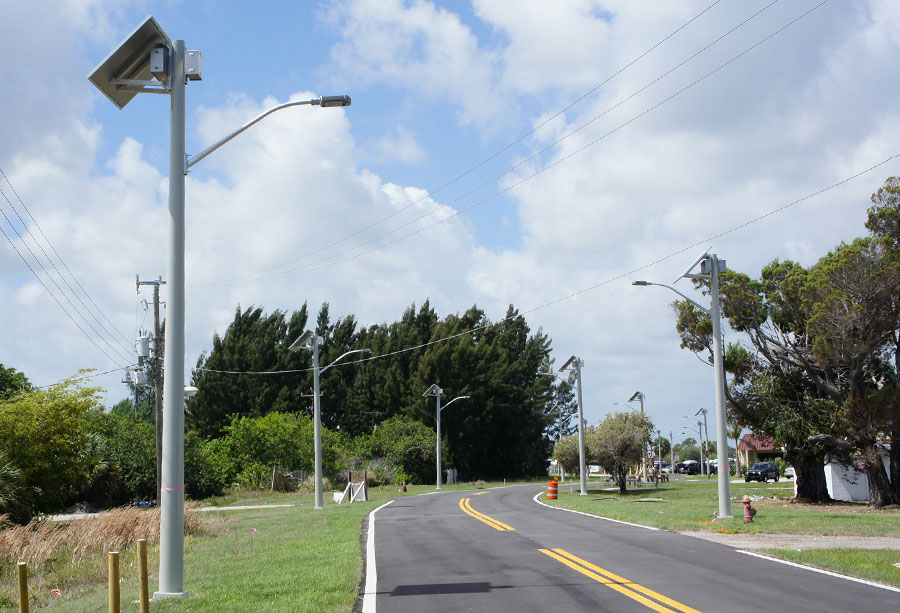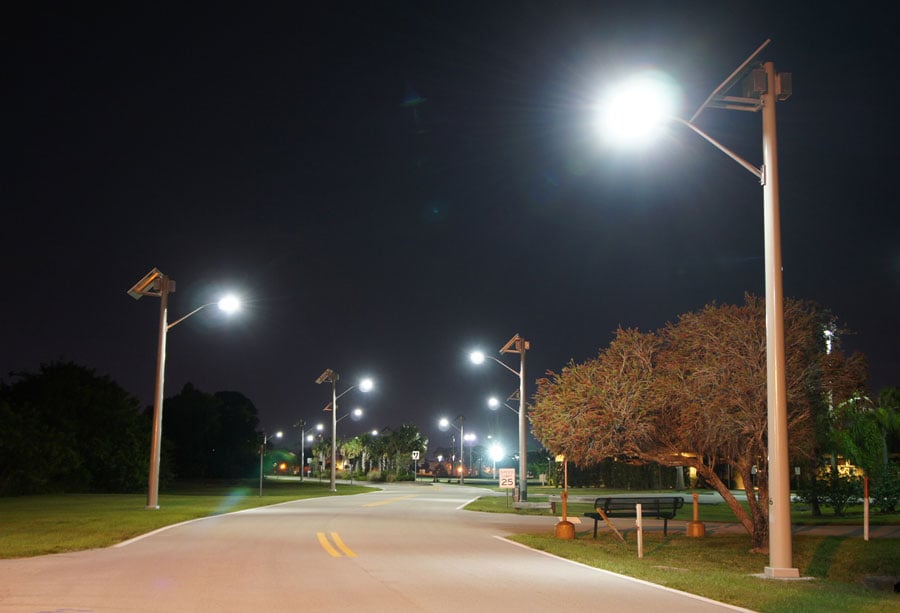
Ever drive down a road and there is a whole stretch of lights, but all you see are small circles of light on the ground every hundred feet or so and nothing in between? This doesn’t really help with visibility. However, when you go down a road that has uniform lighting, with no dark areas between the lights, visibility is increased tenfold. Uniformity provides better visual assistance and does not put as much strain on the eyes. When designing a solar street light project, uniformity still needs to be taken into consideration.
IES standards are different between roadways. Large freeways and highways have much different light level requirements than urban roads. Even different cities and municipalities have their own set of standards that go above what IES standards are. Gathering this information and completing a lighting layout to match the standards will be the first step in making sure that the new solar street lights are uniform and meet minimum standards.
Most companies can provide you with the lighting layouts if requested. This is performed by an engineer within the company to ensure that the spacing, wattage, and light level requirements are all within the constraints of the system. If dimming will be used, a new rendering showing what the light levels will be when the fixtures are dimmed should also be shown. This will allow for a better understanding of what to expect when the fixtures are reduced.

There are also many fixture options when looking at solar street lights. We are no longer stuck with standard Cobrahead style lights, allowing for decorative and more modern options for different architectural needs. The implementation of LEDs allows for uniform lighting levels between various fixture sets. A bell style fixture which used to only produce a round area of light directly below the fixture can now provide different distribution patterns and allow for lighting of roadways with uniformity.
LED lights also provide much better lighting with much less light loss from wasted light. Older style fixtures such as metal halide and high pressure sodium had a lot of wasted light. The lumens of the lamp get thrown in all directions and the fixtures were designed to push the light out everywhere with no real task lighting. LEDs provide task specific lighting and are pushing the light in only in the area that requires lighting. This additional efficiency allows for the use of much less power, fewer lumens, and better overall lighting and uniformity.
The solar allows for additional features such as easy installation, lighting where no power is currently available or difficult to bring in, and efficient use of LED technology since the LEDs themselves operate on DC, not on AC, and provide more efficiency of the fixture. The technologies now work hand in hand to provide the required uniformity with the use of solar for a complete solar street lights application.



